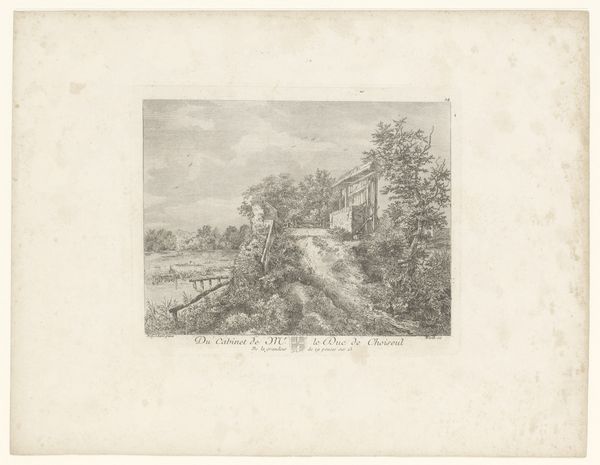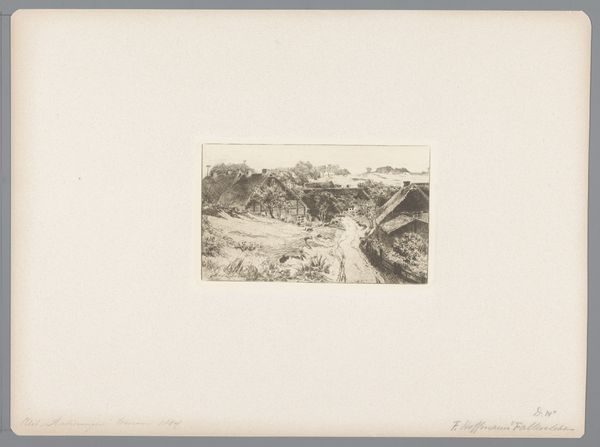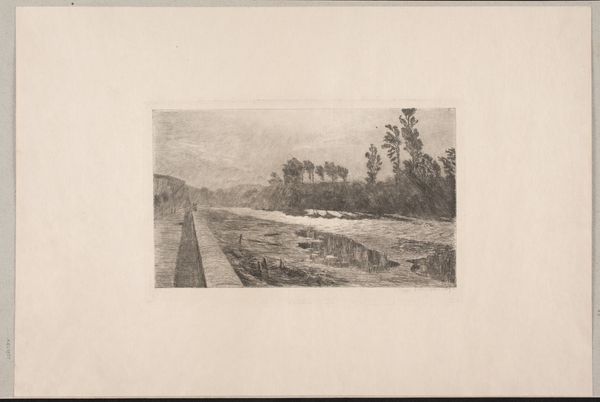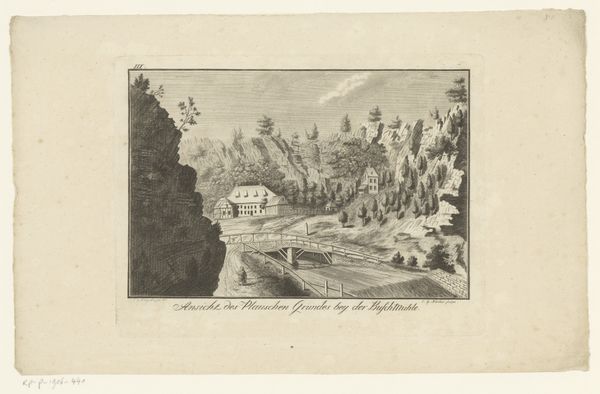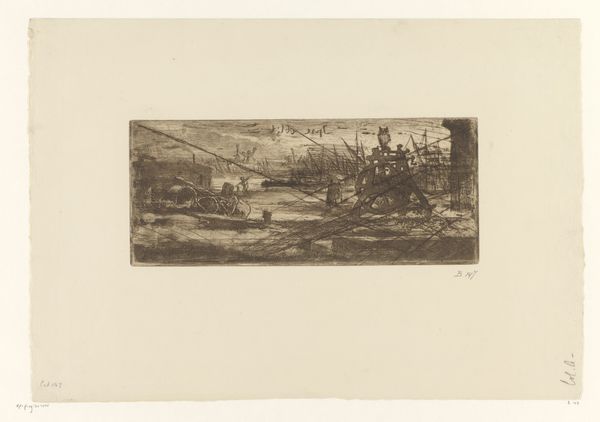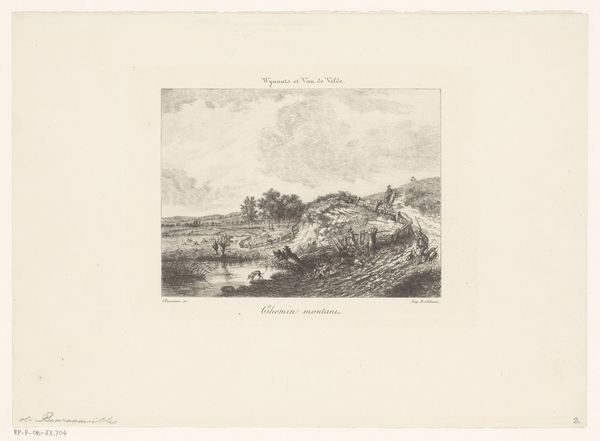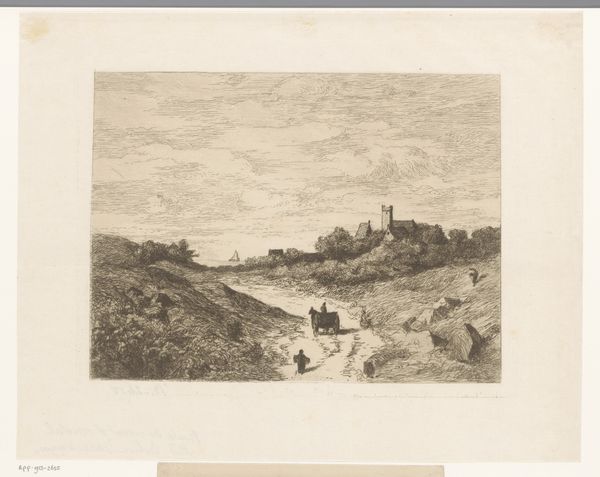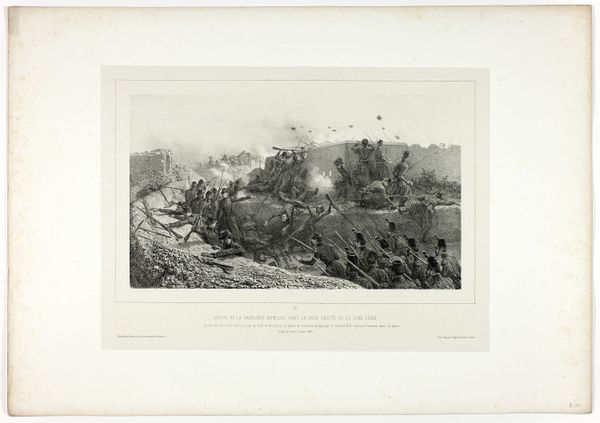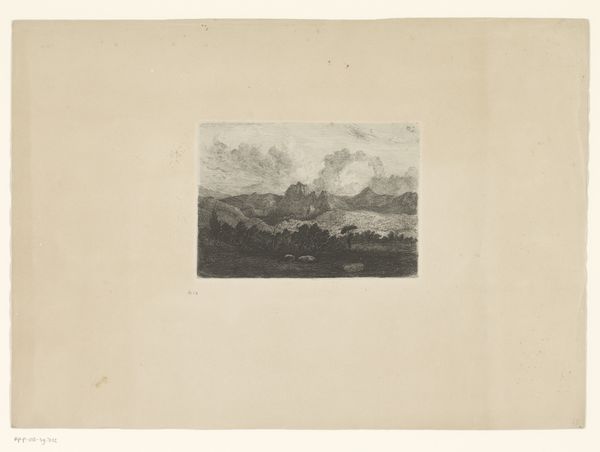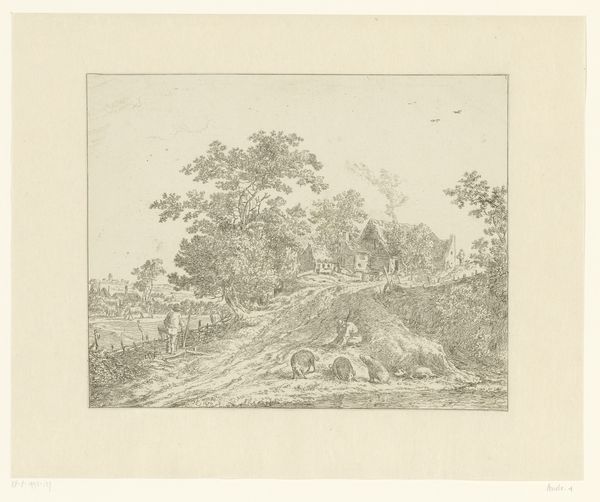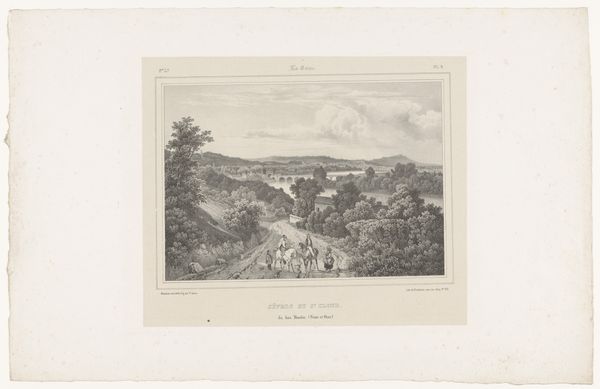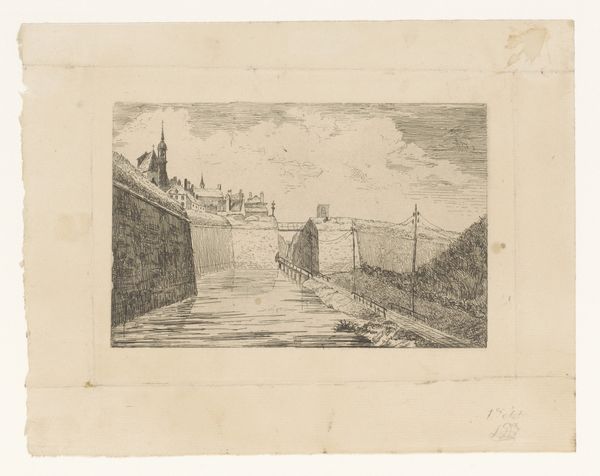
Dimensions: height 194 mm, width 290 mm
Copyright: Rijks Museum: Open Domain
Editor: This is Giovanni Battista Piranesi’s “Landschap met bouwwerken in de Albaanse Heuvels,” made in 1762. It's an etching and engraving print. It gives me a slightly melancholic feeling; it's quite detailed for such a wide, open landscape. What’s your interpretation of it? Curator: I see it as part of Piranesi’s broader project of reimagining and monumentalizing Rome's past, especially through its architectural remnants. Consider the social and political context: the 18th century was obsessed with the Grand Tour, with wealthy Europeans, especially Britons, flocking to Italy to experience its classical heritage. Editor: So, was he feeding that demand with these prints? Curator: Absolutely. He’s playing with the desire for accurate documentation but also imbuing it with a sense of drama and the sublime. Notice the figures in the landscape - they are dwarfed by the scale of the architecture. The print acts as a reminder of the power and ambition of the Roman Empire but also speaks to its eventual decay and fall, themes that resonated within the political and philosophical thinking of the time. What does this dramatic contrast between tiny figures and monumental scale evoke in you? Editor: I hadn’t thought of the relationship between humanity and landscape in those terms before! The composition suddenly feels like it's emphasizing the insignificance of individuals against history. I always thought the sublime feeling only concerned art and beauty. Curator: It's interesting to consider that feeling and sentiment, when experiencing the work of art. I am delighted this has offered a valuable reframing of that piece.
Comments
No comments
Be the first to comment and join the conversation on the ultimate creative platform.

